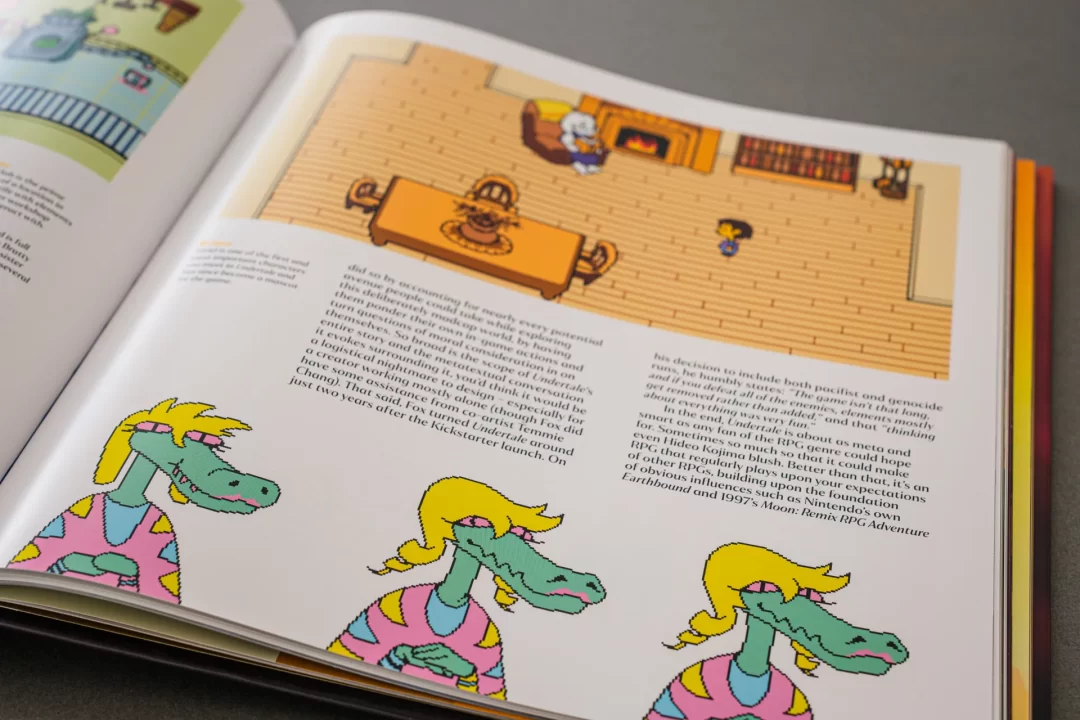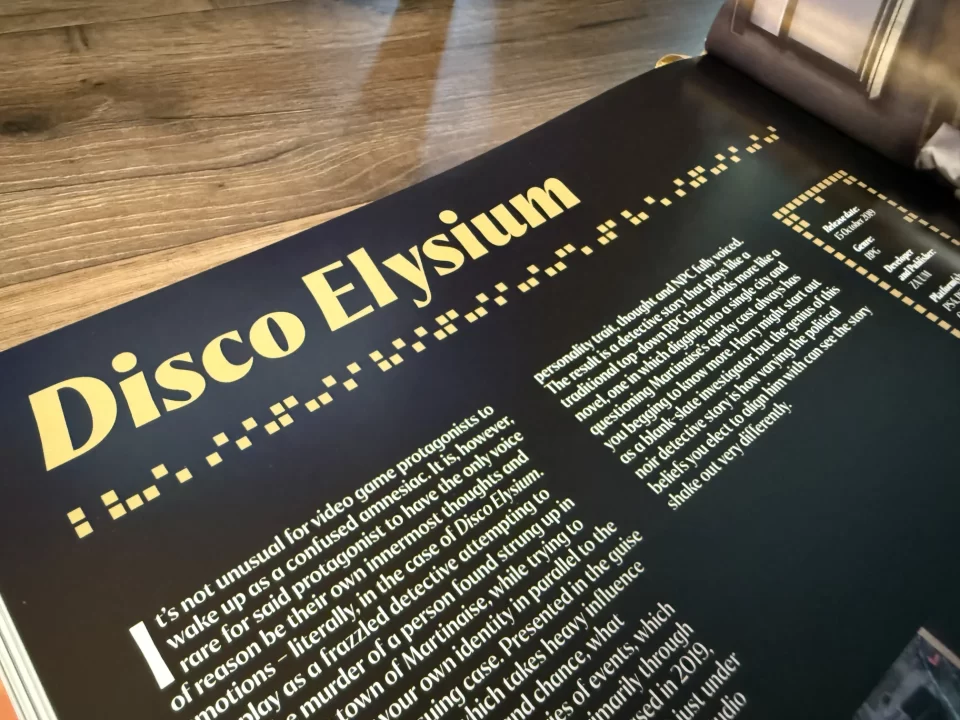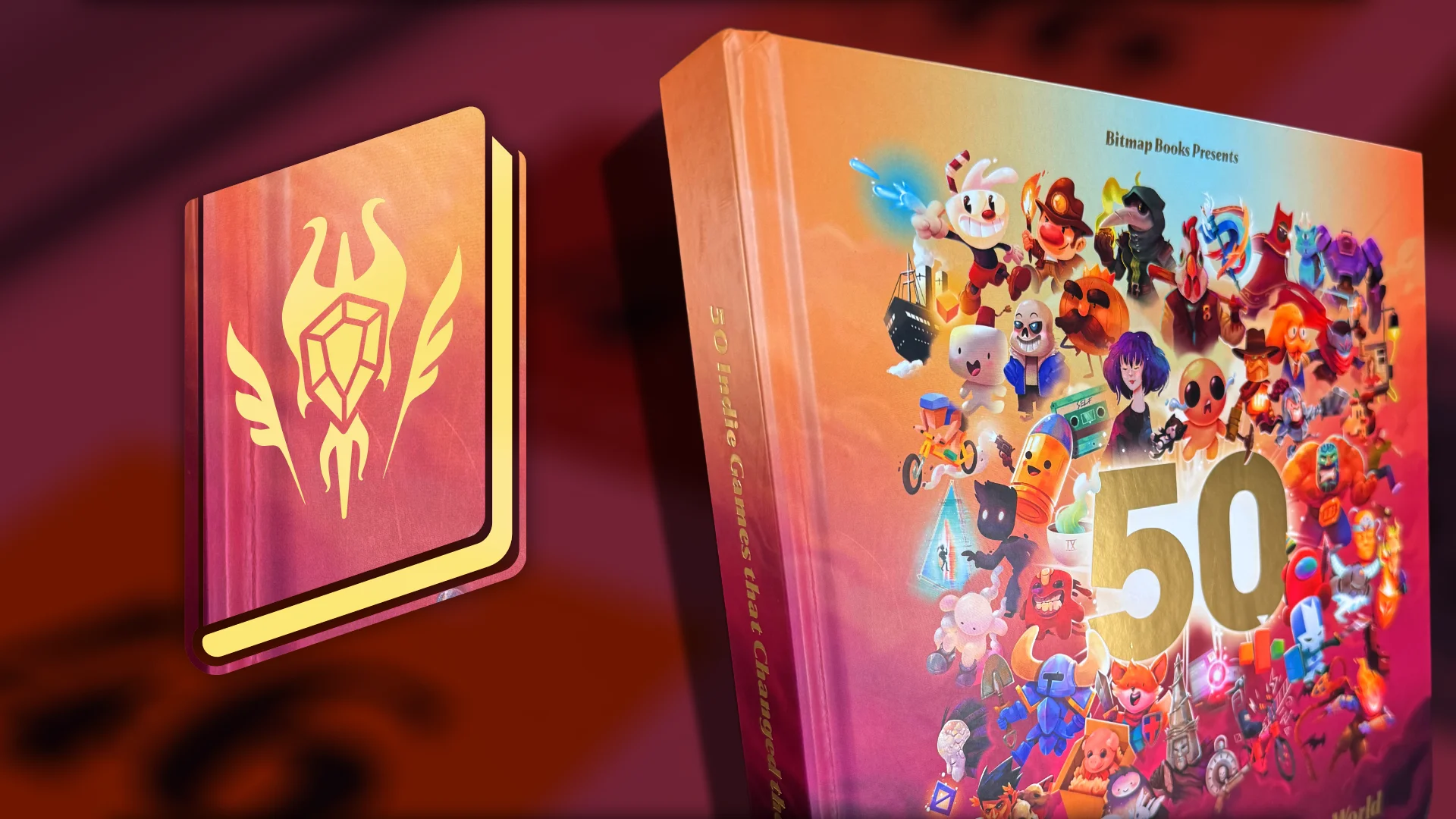I can’t imagine the difficulty in picking 50 essential or notable indie games over the last five years, to say nothing of doing so without a designated timeframe, but that’s exactly what writer Aaron Potter did with Bitmap Books’ latest release, 50 Indie Games that Changed the World. Before I begin, like I did on our recent Random Encounter Book Club podcast about this book, I want to very explicitly clarify one thing about the games in the book by quoting a portion of Aaron’s introduction:
This isn’t a list of the definitive or best indie games ever; rather, it’s a collection of indie games that by changing something within the unique worlds they present — however big or small — they found a way to make us think differently about our own.
We’re so used to seeing game lists these days, whether it’s the “best of” or “worst of” something, “top tricks you need to know,” and so on. Only so many people offer unexpected and entertaining lists like Outside Xtra. So while it’s natural to see a book like this and assume it’s a “best indie games” collection, it’s essential to note Potter’s description above.
With that out of the way, let’s get into details. If you own any of Bitmap Books’ titles, it won’t surprise you to learn that 50 Indie Games that Changed the World lives up to their usual standards. Before you even open the book, the harmonious color scheme and finishes make a killer first impression. This 452-page hardcover book is printed on gorgeous paper with a great weight to it. The cover art by illustrator Roberto Zurdo is stunning, featuring a collage of nearly all (or all?) 50 of the main games in the book. Given the games’ wildly different art styles, making a coherent collage is a tall order, especially with that many characters and objects! But the result is beautiful, on a cover with a satin finish and gold foil stamped lettering. Inside the front and back covers are muted gold pages, while a yellow gold bookmark is on hand to save your spot.




The interior page designs are clean, with nice, legible fonts, and a cool pixel motif for sidebars and accents that add a, well, video game-ness to the pages in a minimalistic fashion. Every visual inside is a treat, from collections of concept art to full-page screenshots that beautifully showcase the pixel art of games like Into the Breach or the moody black and white landscapes of Limbo. Beyond my appreciation for good design, there is an abundance of concept art and early development screenshots I had never seen, even on games I know well, like Stardew Valley.
But this isn’t an art book, so the words in and around all those visuals are essential. Thankfully, the book is full to the brim with insightful and informed takes. It’s important to note that for each of the 50 games in the book, Potter talked to someone involved in that game’s development in one way or another. That alone is an impressive amount of legwork, and given that the whole point of the book is to celebrate the games and people behind these indie games, having contributions from over 50 people adds richness to every game entry. Toby Fox talked about design goals for battles in Undertale, while Lucas Pope offered a ton of insight into how Return of the Obra Dinn came into being and evolved throughout development. That’s two examples of 50, but I learned extensively about games I was less familiar with, and even some about those I’ve completed. I never finished a game entry without learning something new or interesting (usually both). For this review, I focused on games we cover here at RPGFan, but there’s far more to read about. Whether you love Vampire Survivors as much as I do or want to read about Among Us, Journey, Gris, or many others, there’s a ton to explore.
Every game entry ends with a sidebar titled “How it Changed the World” that summarizes the defining reason for the game’s inclusion in the book, such as Oxenfree’s inventive narrative presentation, the creative challenge of managing your party’s psychological state in Darkest Dungeon, or Hades’ incredibly hot gods successful blend of rewarding gameplay and narrative in a roguelike game. While I wouldn’t want anyone reading only this summary any more than I want people only looking at a review score in lieu of the review itself, it’s a great way to concisely convey what earned each game a spot in the book.




If I have one point of contention with 50 Indie Games that Changed the World — and, in fact, I only have the one — it’s the Honorable Mentions section at the end of the book that includes 16 more games that are described as “equally-as-worthy” as the book’s main 50 games. Now, I could split hairs about how something can’t be an honorable mention — as in, doesn’t qualify for the main list — but still be an equal. However, my issue is less about the description and more about some of the games in this section.
Now, again, I know the book’s goal is not to list the “best” indie games, but games that changed the world in some way. By extension, that means all 66 games are influential to one degree or another. And by that token, seeing games like Hollow Knight, Celeste, and more here versus the “main” list feels strange. Cave Story’s writeup even mentions that it “is where much of the modern indie scene’s attitude and ideals can be traced back to.” That’s a wild statement to make — and one I’d agree with, mind — for an honorable mention. The biggest shocks of all were seeing Disco Elysium and Minecraft in this section. Disco Elysium is a revelatory experience for every person I know who played it. Following the studio’s collapse, many people spun off to form several new companies aiming to develop a worthwhile successor, alongside a growing list of games inspired by DE, like Esoteric Ebb. As for Minecraft, well, I don’t mean to weaponize the book’s own words, but Minecraft is introduced as “The poster child for the level of global success and cultural impact an indie game can achieve…” which is hard to argue!
Like I said, I don’t want to nitpick a fantastic project like this book, and any kind of game list is going to be somewhat subjective. Maybe there’s a reason I don’t know that saw Disco Elysium here while Sea of Stars — a great throwback RPG, but one that left me scratching my head about how it changed the world — made the list, and I wish I knew what it was. The Honorable Mentions are all shorter, one-page entries, and do not feature developer interviews or extensive histories like “the 50.” And maybe that’s part of it. Given that almost every person who made Disco Elysium what it is has left ZA/UM, perhaps that made interviews difficult. Maybe Minecraft couldn’t (shouldn’t?) be listed in the modern context since it’s not really an indie game since Microsoft bought it in 2014. And maybe it’s all fine because these games are still included, and it doesn’t ultimately matter if the book title was 60+ Indie Games that Changed the World, because even that could only cover a portion of the incredible indie game scene.


Please don’t let any of the last few paragraphs dissuade you — 50 Indie Games that Changed the World is simply brimming with insight, history, and Bitmap Books’ sky-high level of quality layouts, design, and materials. I strongly recommend checking it out. Even my one issue ultimately stems from my desire to read longer-than-one-page entries on some games. It doesn’t change the fact that this book is another worthwhile entry in Bitmap’s catalog and upholds their excellent standards.
You can order 50 Indie Games that Changed the World from Bitmap Books’ website.
Disclaimer: This review is based on a copy of the publication provided by the publisher. This relationship in no way influenced the author’s opinions.



